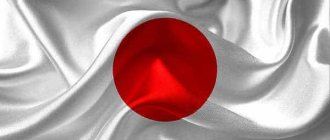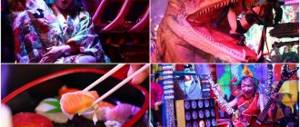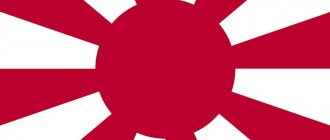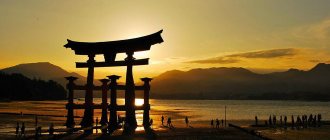The problem with Western education (and Russia, of course, belongs to Western civilization) is that many things are taught to be accepted by default. However, in the Western world there is also a conflict between the USA and Europe in units of measurement, but, for example, no one questions chronology.
But not in all countries months, years and eras pass simultaneously. Usually, a Russian experiences the first cultural shock when he arrives in Thailand: 2020 is the 2563rd year there. And then it turns out that the Chinese live according to two calendars at once, and in Taiwan it’s actually the 109th year. In general, humanity is not as close to the adoption of a single calendar as it is to Thailand. But we will try to orient you to current times, eras and eras.
From Julius to the Vatican
The basic measurement of time is the day. Everything is simple with it: this is the period of time from, for example, the first ray of sun to the same one the next day. A larger measure of time, the month, appeared based on the rotation cycle of the moon. That’s why it’s called “month” in Russian (in Chinese, by the way, too). The largest observable measure of time is the Earth's revolution around the Sun.
This roughly corresponds to 365 days, but does not correspond at all to 12 lunar cycles, so humanity had to adjust the length of months.
The most common “adjustment” of monthly cycles to one annual cycle is the Gregorian calendar. It has been followed by all Catholic countries since 1582, when the Vatican ordered order to be restored. Before the Gregorian calendar, Europe used the Julian calendar, which Julius Caesar named after himself in 45 BC.
The only difference between the Gregorian and Julian calendars is leap years. Over the fifteen centuries of its existence, the Julian calendar has lagged behind the Sun by 10 days. The introduction of a new calendar was supposed to compensate for this.
Russia was one of the very last to switch to the Gregorian calendar - January 26, 1918. Hence the confusion with the two New Years, different days of Easter for Orthodox and Catholics, etc.
According to the Gregorian calendar, we are living in 2021.
Emperor's reign
We keep our count of days from the Nativity of Christ without changing anything. In Japan, a different practice has developed. When a new emperor ascends the throne (he does not actually rule), he chooses a motto for himself - nengo, under which the time of his power will pass. This motto, composed of two prosperous hieroglyphs, is required so that the entire period of reign passes smoothly, without cataclysms. A special state commission, which studies ancient Chinese scrolls with classical literature for its selection, was created and is being created in Japan. What is the year now? This period is called the Heisei era, which means “Peace and Tranquility.” It began in 1989, when the divine chosen one Akihito came to power.
Time in heaven
The Chinese have long been accustomed to using two calendars in parallel: the Gregorian and their own lunar calendar. At the same time, the Chinese have two calendars: with the beginning of the year in spring, and with the beginning of the year in autumn.
In any modern operating system, it is possible to enable the parallel Chinese calendar. Communist China considered itself very progressive, so the calendar in modern China corresponds to the Gregorian calendar.
The Chinese calendar has a sixty-year cycle (ganzhi, 干支), which is divided into five elements and twelve animals. These 12 animals you know as zodiac signs. By the way, in Chinese mythology they don’t mean anything at all - just names.
In China, almost all holidays are traditional, so weekends in China are rarely tied to Gregorian dates.
The Chinese traditional calendar is used in China, Japan, Korea and Vietnam.
According to the Chinese traditional calendar, the year is now 4717.
Calculation in Japan
What is the year now? The chronology in Japan forces Europeans to look into the astrological signs of the coming year. We strive to please the new creature that comes, to prepare delicious dishes for him, so that he will protect us for a whole year. Of course, this is just a ritual that adds spice to the New Year holiday and is forgotten in Western countries the next morning. But in Asian countries, the New Year, which falls between the twentieth of January and February, is celebrated on a grand scale. Fireworks and all rituals are required. For example, the Japanese visit Shinto shrines, buy a toy Daruma deity, make a wish and paint one of his eyes. When the year ends, if the wish has come true, then Daruma’s second eye is painted over, and if not, then it is not touched. In any case, the wooden doll is sent back to the temple where it was bought and burned in special bonfires.
Reiwa time
The Japanese used a slightly modified version of the Chinese calendar until 1873, but later switched to the Gregorian calendar. Holidays, however, are still, as in China, tied to the phases of the moon.
But, as in ancient China, the tradition remained of starting a new calendar from the beginning of a new era. True, this is measured not by dynasties, but by individual emperors.
The penultimate Japanese era (Heisei) lasted from 1989 to 2019. And in 2021, the Reiwa era has arrived, so Japan is now officially in its second year.
Japanese calendar
Japan uses both the Western (西暦) and Japanese (年号) calendars . Thus, you can see in Japan: this entry 2014年(year)07月(month)16日(date) and this entry 26年(year)07月(month)16日(date) and this will mean the same thing same . The fact is that in the Japanese traditional calendar, chronology is counted from the beginning of the year of the emperor's reign .
The Japanese borrowed this frame of reference from mighty ancient China, which at that time was the “motto” (Nengo) of its rule. Before the Meiji Restoration (a set of political, military and socio-economic reforms in Japan from 1868 to 1889), the emperor was allowed to change the motto of his reign as many times as he wished if his reign was not very successful, or vice versa, to mark some an important event.
During the Meiji Restoration, changing the motto during the reign was prohibited . That is, the year of proclamation of the motto is the first year of a new era from which a new countdown begins. We will look at specific examples from Japanese life below!
Japanese chronology on the bus ticket
This means that 11/23/27 is the 23rd year of Heisei, 11th month, 27th day, that is, November 27, 2011 .
A few more examples below:
Travel ticket to Osaka
High Speed Train Ticket
As you can see, various tickets (including for the Shinkansen) can also contain a Japanese time countdown.
Saying time with minutes in Japanese
| 1:05 | ichi-ji gofun |
| 1:10 | ichi-ji juppun |
| 1:15 | ichi-ji juugofun |
| 1:20 | ichi-ji nijuppun |
| 1:25 | ichi-ji nijuugofun |
| 1:30 | ichi-ji han ichi-ji sanjuppun |
| 1:35 | ichi-ji sanjuugofun |
| 1:40 | ichi-ji yonjuppun |
| 1:45 | ichi-ji yonjuugofun |
| 1:50 | ichi-ji gojuppun |
How is the choice made?
When choosing a new name, high-ranking officials do not act at random. First, experts determine how the Japanese live, what their aspirations are, and what the prospects for the country as a whole are. Afterwards, a team of scientists selects words that fully reflect the current situation, and only after that the Cabinet of Ministers of Japan selects one name from the compiled list.
To avoid information leakage, members of the Cabinet of Ministers leave all the gadgets they have with them in front of the entrance to the meeting room: from smartphones to electronic watches. They leave this office only after the name they have chosen is officially announced.
Edo period, 1603-1867 (Tokugawa shogunate).
The Edo period is named for the location of the headquarters of the Tokugawa shoguns in Edo (modern Tokyo ). The founder of this shogunate, Tokugawa Ieyasu , brought the country out of a permanent state of civil war and united it under his leadership. The expulsion of Europeans and the prohibition of Christianity were accompanied by a voluntary “closure” of the country, when all contact with the outside world was reduced to a minimum.
Rapid growth of cities, development of urban culture, economy, sharp increase in population. The total regulation of the life of all segments of the population finally formed the type of mentality that we call “Japanese”.
Sakura time
From the north, from the Sea of Okhotsk to the south, where Japan is washed by the Pacific Ocean, there is an archipelago with almost seven thousand islands. Its length is three and a half thousand km. Therefore, asking about the weather is considered good manners for any Japanese.
The Japanese are really looking forward to the beginning of warm winds, when winter will be replaced by spring blooming with cherry blossoms.
Only she appears on different islands at different times. In the south, on the island of Kyushu, sakura can herald spring as early as February, and on the northern islands of Hokkaido and Aomori only in May. So if they ask: “What time of year is it now in Japan?”, then you need to navigate not by the calendar, but by the geographical location of a particular island. It’s like in our country - on the Black Sea coast spring is already about to turn into summer, and in the Moscow region in May piercingly evil northern winds blow, cold rain falls, and there are frosts at night. And according to the calendar, it’s spring, which residents of the Moscow region cannot wait for.
We hope that it is now clear to everyone how the current year is calculated in Japan.
How many people use the gengo system?
Of course, with Japan open to global influence, people have become increasingly less likely to use the gengo chronology system. Only a third of respondents prefer to follow long-standing traditions, the rest of the residents prefer the Western calendar.
Times change, trends change. And only one person will be tied to the gengo model for the rest of his days - the outgoing Emperor Akihito. At the end of their reigns, Japan's former emperors are named after their eras. So it is quite expected that Akihito will become the Heisei Emperor, just as his father became the Showa Emperor.
Found a violation? Report content
Minutes in Japanese
| :01 | ippun | :21 | nijuuippun | :41 | yonjuuippun |
| :02 | nifun | :22 | nijuunifun | :42 | yonjuunifun |
| :03 | sanpun | :23 | nijuusanpun | :43 | yonjuusanpun |
| :04 | yonpun | :24 | nijuuyonpun | :44 | yonjuuyonpun |
| :05 | gofun | :25 | nijuugofun | :45 | yonjuugofun |
| :06 | roppun | :26 | nijuuroppun | :46 | yonjuuroppun |
| :07 | nanafun | :27 | nijuunanafun | :47 | yonjuunanafun |
| :08 | happy | :28 | nijuuhappun | :48 | yonjuuhappun |
| :09 | kyuufun | :29 | nijuukyuufun | :49 | yonjuukyuufun |
| :10 | juppun | :30 | sanjuppun | :50 | gojuppun |
| :11 | juuippun | :31 | sanjuuippun | :51 | gojuuippun |
| :12 | juunifun | :32 | sanjuunifun | :52 | gojuunifun |
| :13 | juusanpun | :33 | sanjuusanpun | :53 | gojuusanpun |
| :14 | juuyonpun | :34 | sanjuuyonpun | :54 | gojuuyonpun |
| :15 | juugofun | :35 | sanjuugofun | :55 | gojuugofun |
| :16 | juuroppun | :36 | sanjuuroppun | :56 | gojuuroppun |
| :17 | juunanafun | :37 | sanjuunanafun | :57 | gojuunanafun |
| :18 | juuhappun | :38 | sanjuuhappun | :58 | gojuuhappun |
| :19 | juukyuufun | :39 | sanjuukyuufun | :59 | gojuukyuufun |
| :20 | nijuppun | :40 | yonjuppun |
Telling the time in Japanese
| Watch | Japanese equivalent (romaji) | Hiragana | Kanji | Japanese minutes (romaji) | Katakana | Kanji |
| 1 hour | ichiji | いちじ | 一時 | ippun | いっぷん | 一分 |
| 2 hours | niji | にじ | 二時 | nifun | にふん | 二分 |
| 3 hours | sanji | さんじ | 三時 | sanpun | さんぷn | 三分 |
| 4 hours | yoji | よじ | 四時 | yonpun | よんぷん | 四分 |
| 5 o'clock | goji | ごじ | 五時 | gofun | ごふん | 五分 |
| 6 hours | rokuji | ろくじ | 六時 | roppun | ろっぷん | 六分 |
| 7 o'clock | shichiji | しちじ | 七時 | nanafun | ななふん | 七分 |
| 8 ocloc'k | hachiji | はちじ | 八時 | happy | はっぷん | 八分 |
| 9 o'clock | kuji | くじ | 九時 | kyufun | きゅふん | 九分 |
| 10 hours | juuji | じゅうじ | 十時 | juppun | じゅっぷん | 十分 |
| 11 o'clock | juuichiji | じゅういちじ | 十一時 | juuippun | じゅういっぷん | 十一分 |
| 12 hours | juuniji | じゅうにじ | 十二時 | juunifun | じゅうにふん | 十二分 |
| At what time? | nanji | なんじ | 何時 | nanpun | なんぷん | 何分 |
Naruhito and the Reiwa era: Who became the new Emperor of Japan
Japan has a new emperor. With the abdication of Akihito and the accession of Naruhito to the throne, the Heisei era ended and the Reiwa era began.
The end of a wonderful era
April 30 and May 1, 2021 will forever go down in the history of Japan, and the whole world. It was at the junction of these dates that a change of emperor took place in the Land of the Rising Sun. For the first time in two centuries, this was not due to the death of a ruler. 85-year-old Akihito appealed to the people to allow him to spend the rest of his life with his family. To make this possible, parliament passed a special law according to which “daijo tenno” was restored, which means the title of the voluntarily abdicated emperor. With him, the Heisei era ends - that was the name of Akihito’s reign, which lasted for the last three decades.
The ruler who left the Chrysanthemum Throne was replaced by his eldest son Naruhito, who was destined to become the 126th Emperor of Japan. According to legend, their dynasty never ended, and it was started by the Sun Goddess Amaterasu. Thus, a new era of “Reiwa”, which means “blooming world,” has arrived in the country. This is the name that will be given to the years of the reign of the new monarch. “Thank you for everything in Heisei, and see you in Reiwa,” is how the Japanese remade the traditional New Year’s greeting to exchange it with each other in the last month of Emperor Akihito’s reign.
Naruhito ascended the throne
On May 1, Naruhito's enthronement ceremony took place, which was attended by about 270 people. Among them are Empress Masako and other members of the imperial family, Japanese Prime Minister Shinzo Abe, members of the cabinet, heads of both houses of parliament and other officials. The new ruler was presented with the Great State and Personal Seals, which are symbols of his powers, as well as sacred regalia: a sword and precious jasper. It is curious that Akihito, who became “emeritus emperor,” did not take part in the ceremony. This is the law: after abdication, he cannot attend state events.
The ceremony was broadcast on national television channels. The new emperor addressed the people of Japan live. He vowed to strictly follow the country's Constitution and strictly fulfill his duties as a symbol of the state and the unity of the Japanese people. In his speech, Naruhito also outlined his desire for the prosperity of Japan and world peace. He also noted that with the awareness of what is happening, he is filled with a sense of responsibility. The new emperor promised to be guided by the previous rulers in his reign. Naruhito also thanked his father for his service to the Japanese nation.
Emperor Akihito voluntarily abdicated the throne. Photo: Attila JANDI/shutterstock.com
First congratulations
Russian President Vladimir Putin congratulated the new Emperor of Japan on his accession to the throne. The text of the telegram was published on the Kremlin website. The Russian leader noted that relations between the two states are actively developing, and Moscow and Tokyo are actively involved in solving pressing regional and global problems. The Russian President's message notes that cooperation between the two countries meets the interests of both peoples and is aimed at strengthening stability and security in the world. In conclusion, Vladimir Putin wished the Japanese Emperor good health, prosperity and successful reign for the benefit of the people of Japan for many years to come.
Earlier, Chinese President Xi Jinping sent a congratulatory telegram to Naruhito, in the text of which he noted that the two countries have existed side by side since time immemorial. He noted that Japan and China should continue to develop friendly relations in the future, helping to strengthen peace on the planet. US President Donald Trump also congratulated the new Japanese emperor, conveying his best wishes on behalf of all Americans.
What you need to know about Naruhito
The new Emperor of Japan was born on February 23, 1960. Naruhito is much like his father: he never used his title to enhance his reputation and always remained on an equal footing with the common people. The Japanese are confident that he will be a wonderful ruler and will continue to solve important problems to strengthen the country.
He received his education in 1982 at Gakushuin University, graduating from the Faculty of History, and after that he entered Merton College, where he studied until 1986. There he became seriously interested in the problem of preserving water on Earth. Now he is engaged in charity work and continues to solve this global problem.
Naruhito became the first heir in a long time whose mother is Japanese and not Chinese. Before marrying Akihito, Michiko was a Catholic, and also had no connection with the imperial house. Even now, some Japanese sometimes have doubts about the legality of such a marriage.
The 126th Emperor of Japan Naruhito and his wife Michiko. Photo: www.globallookpress.com
Since school, Naruhito began to be interested in philosophy and history, which he later chose as specialized subjects for study at the university. His hobbies were and remain sports (baseball and mountaineering), as well as music (playing the cello and viola). All of this to some extent describes certain character traits of Naruhito: perseverance, confidence, wisdom and stability.
Naruhito met his wife when she was still a student. Masako Owada was not a representative of the aristocracy, but she won the prince’s heart. Nevertheless, she was in no hurry to reciprocate his feelings. Masako was determined to devote herself to her career. The new empress knows several foreign languages, including Russian.
Fun fact: Masako spent her early years in Moscow and even attended kindergarten with Soviet children until her father was transferred to work in New York. She was educated at Harvard and wanted to become a United Nations representative in Japan. Thus, she could follow in the footsteps of her father, Hasishi Owada, who served as president of the International Court of Justice and also had a diplomatic background.
Returning to the history of the relationship between Masako and Naruhito, it is worth noting that the prince courted the girl for several years and proposed to her three times. In 1993, Owada finally agreed, and on June 9 of the same year, their wedding took place at the Imperial Shinto Shrine. Masako endured the first years of her new life, spent at court, quite hard. Despite the birth of her daughter in 2001, which became a bright event in the imperial family, Owada faced a number of restrictions, which subsequently became the cause of a prolonged depression.
But now everything is in the past. Masako is currently actively participating in various events with her husband. The empress has a warm attitude towards Moscow, more based on the Soviet past. The woman can still speak Russian fluently. In a sense, Russia is the common interest of Naruhito and his wife. It is worth noting that the All-Russian Exhibition Center exhibition complex is one of the emperor’s favorite places.
The Japanese watch the broadcast of the enthronement ceremony of Emperor Naruhito. Photo: www.globallookpress.com
The life of a Japanese person without an emperor is impossible
Tsargrad talked about the change of emperor in Japan and how important it is for the people of the country with Viktor Mazurik, associate professor of the Department of Philology at the Institute of Asian and African Studies at Moscow State University named after M.V. Lomonosov, and Japanese scholar. The expert emphasized that in Japan, unlike any other countries, the people never rebelled against the emperor, because for them it was the same as rebelling against their own father or even the Shinto god, who is a direct descendant of the Sun Goddess Amaterasu. He also recalled that until 1945, the emperor was an itigami, that is, a living god. And the Americans forced the emperor, in the first article of the Constitution, to renounce his divine origin and determine that he is a symbol of the unity and historical continuity of the nation.
In the Japanese mind, the emperor's rejection of his divine origin was a greater shock even than the bombing of Hiroshima and Nagasaki. Many Japanese still have not psychologically experienced this crisis in their minds. But without an emperor on the throne, they simply cannot imagine their life,
— Victor Mazurik noted.
Also, a Japanese specialist from Moscow State University commented on the opinion that most workaholic Japanese are uncomfortable due to the fact that official holidays in the country were established from April 28 to May 6, since it seems like they will have to rest too much, and this is very unusual for them. According to the expert, modern Japanese youth even have a positive attitude towards such a mini-vacation - this applies to both students and young professionals. As for the older generation, such a sudden change in schedule, even for a few days, is indeed very uncomfortable for them. “Even our people find it difficult to switch to another mode of existence, but the Japanese simply need to overcome some kind of physiological barrier. This is true,” summed up Tsargrad’s interlocutor.
But the new Emperor Naruhito will not have time to rest in the first days of May. He will immediately begin his duties, which will include daily participation in ritual ceremonies and reports to his divine ancestors about his accession to the throne. They will last about two weeks. The most important ceremony will be declaring himself emperor in front of the people, when he appears at the parade on October 22 in an open car.











